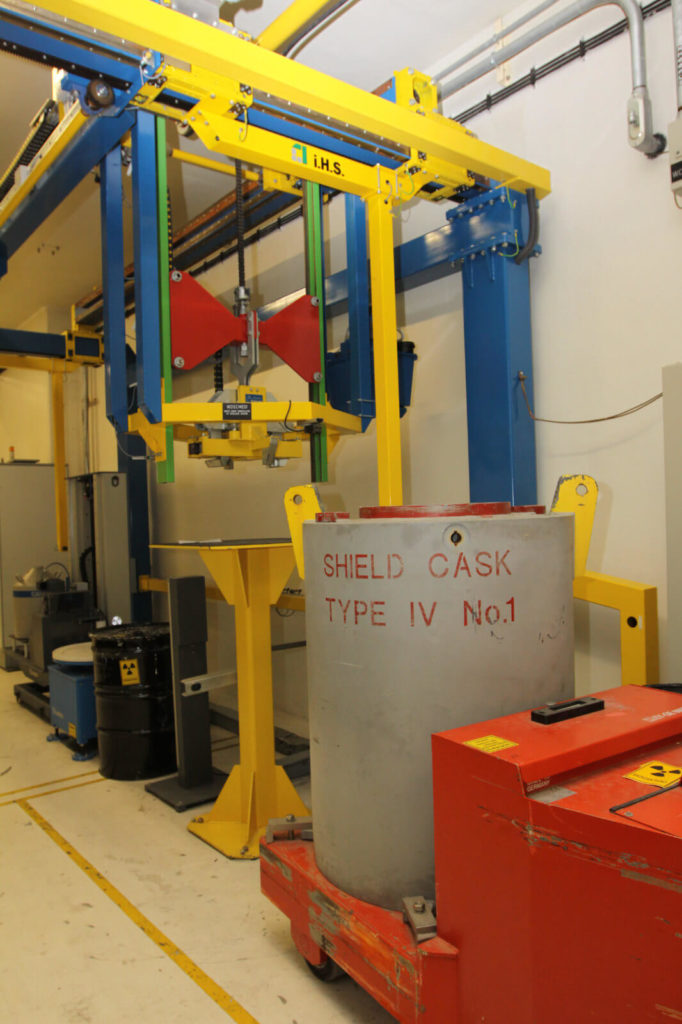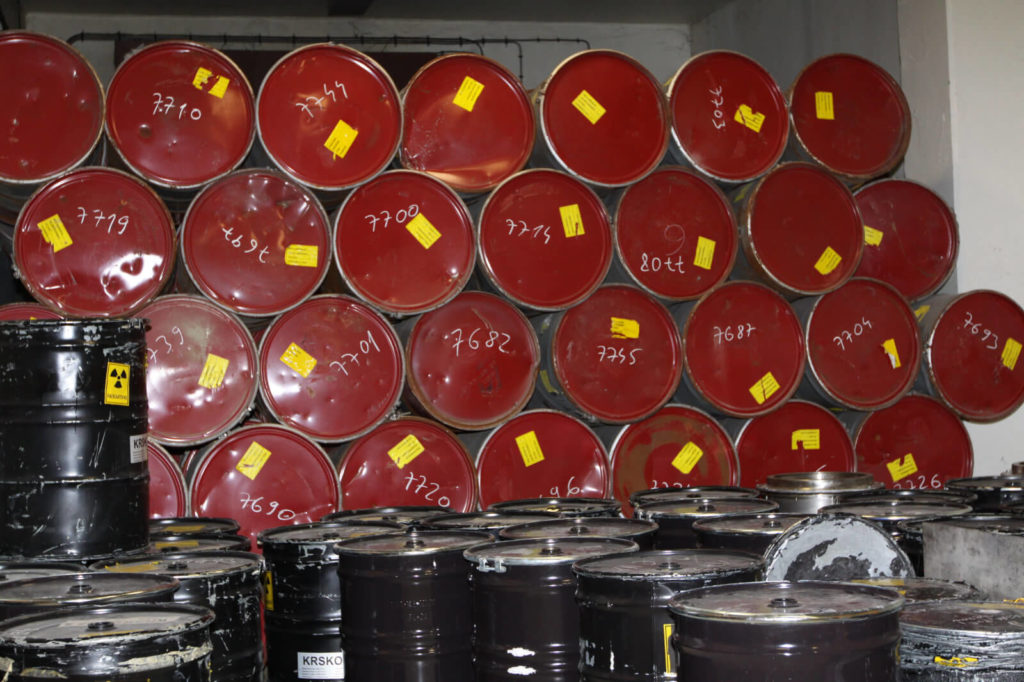Krško NPP generates low and intermediate level radioactive waste (LILW) during the operation (operational LILW) and decommissioning (decommissioning LILW) stages. The Krško NPP applies basic radioactive waste management principles and takes preventive action to reduce the quantity and activity of generated waste. In recent years, the annual average has been about 30 m3 of operational LILW. Waste is characterised, conditioned, treated and temporarily stored at the Krško NPP site.
Radioactive gaseous wastes is kept in special containers to decay.
Radioactive liquid waste comprises radionuclide-contaminated liquids. This waste requires treatment to reduce its volume and make it more suitable for storage. At the Krško NPP, this is done through filtration, evaporation and in-drum drying. Evaporated non-radioactive water is reused in processing. The remaining radioactive mass is dried in drums by heating and water vapor extraction. This leaves a dry, solid residue that can be stored in appropriate containers.
Solid radioactive waste comprises contaminated waste materials, such as plastics, paper, rags, personal protective equipment, tools and filter cartridges. It can be combustible and non-combustible as well as compressible and non-compressible. Due to the relatively large volume of solid waste, procedures are applied to reduce its volume:
- the decontamination of surface contaminated objects at the Krško NPP so they may be released from radiological supervision and reused,
- the compaction and supercompaction of drums with compressible LILW in high-pressure compressors at the Krško NPP,
- the incineration of combustible LILW at Studsvik Radwaste AB in Sweden and return of casks containing ash.
The conditioned/processed LILW is then stored in appropriate containers in the interim LILW storage at the Krško NPP site. Existing storage space is limited. As there are no alternative options for further processing or reuse of the LILW, its final disposal in appropriate repositories needs to be planned for.
According to the Krško NPP data for late 2020, the total volume of stored low and intermediate level radioactive waste (LILW) was 2,413.66 m3, with a total activity of 14.9 TBq.
Table: An overview of the Krško NPP LILW inventory
| LILW type | Year | Mass (t) | Volume (m3) | Activity (TBq) |
|---|---|---|---|---|
| Operational | by 2023. | 5150 | 2460 | 74,2 |
| Operational | 2024. – 2043. | 880 | 550 | 43,3 |
| Decommissioning (Krško NPP decommissioning) | 2043. – 2058. | 2860 | 2840 | 4,9 |
| Decommissioning (Dry storage decommissioning) | 2103. – 2106. | 390 | 410 | 0,7 |
| Total | 9280 | 6260 | 123,1 |
The best global practices for low and intermediate level radioactive waste management involve a repository disposal after storage. LILW is generally disposed of in surface or near-surface disposal facilities with natural and engineered barriers to prevent radionuclide migration into the environment over the course of several centuries.
The National Programme (for the period until 2025 with a view until 2060) provides the development of the Radioactive Waste Management Centre at the preferred site at Čerkezovac. The Centre should comprise of central storage facility for institutional radioactive waste and disused sources as well as a long-term storage facility for one half of the operational low and intermediate level radioactive waste from the Krško NPP. Additionally, the Centre should also have an information centre as well as necessary administrative and ancillary facilities and infrastructure.
In the long run, the National Programme aims to establish an LILW repository by 2058, preferably of the surface type; this will be defined in more detail in the programme for the period beyond 2050. It should be emphasised that there is no “automatism” to “transform” a storage facility into a repository, given the functional and physical differences between these facilities and their different safety and other requirements. Both the storage facility and future repository will require environmental impact assessments and safety analyses as well as preliminary on-site investigations.


